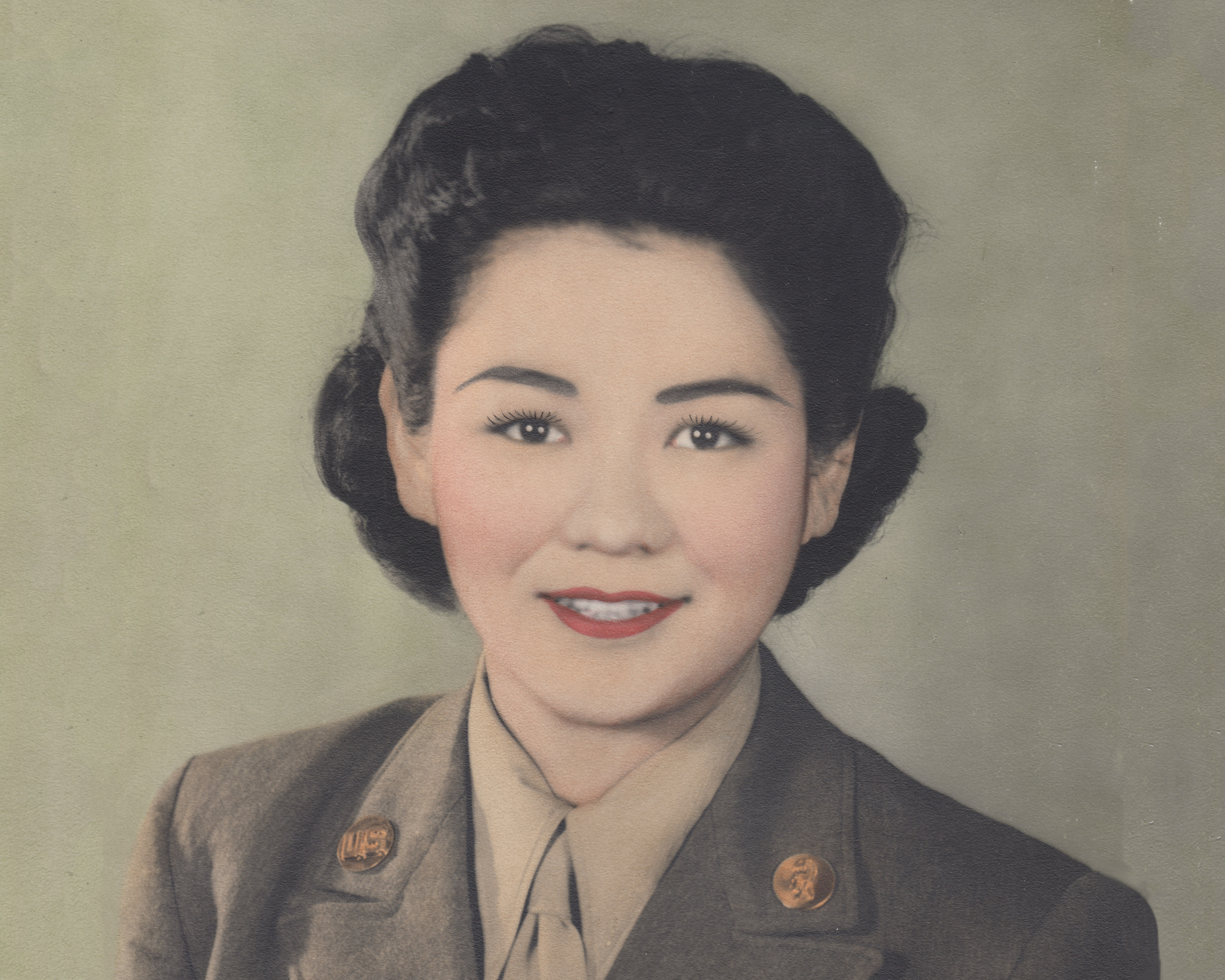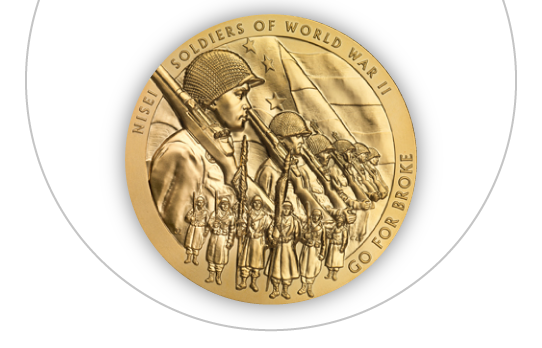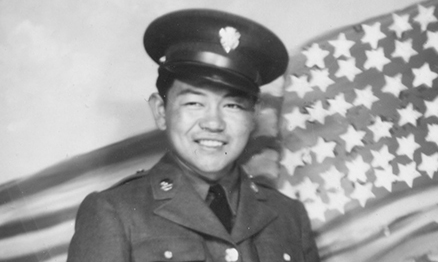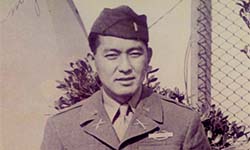Corporal
Terry Toyome Nakanishi
Women's Army Corps
Military Intelligence Service
1921 - 2020
- Citizenship
- Courage
- Humility
- Perseverance
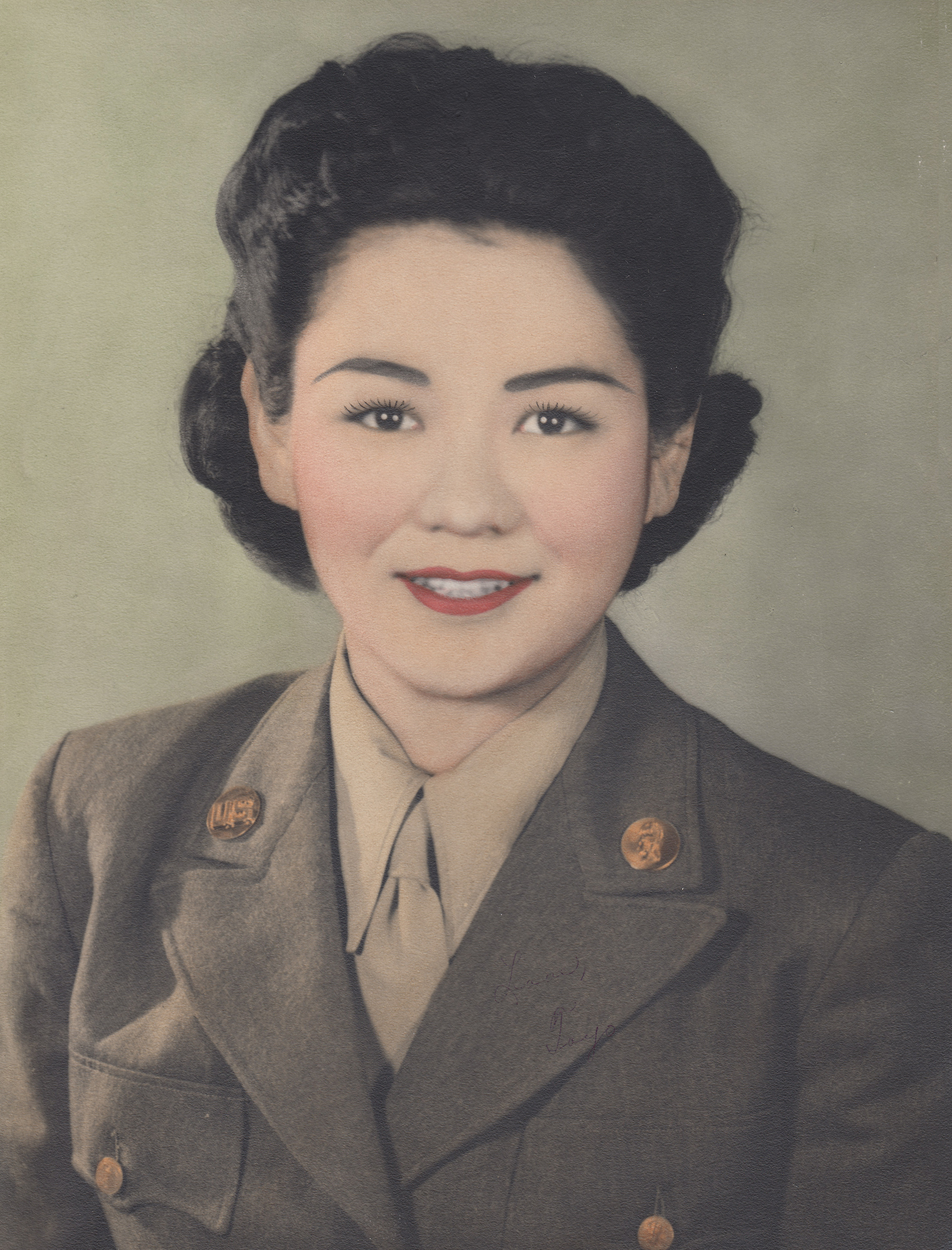
Early Life
Terry’s decision to join the Women’s Army Corps during World War II represents a unique path taken by some Nisei women to assert their American patriotism.
Terry spent her early childhood in Montana, where her Japanese immigrant stepfather worked for the Union Pacific Railroad.
She was a tomboy and often scolded by her older sister who was more "ladylike." She spent her childhood playing with her three younger brothers and her younger sister.
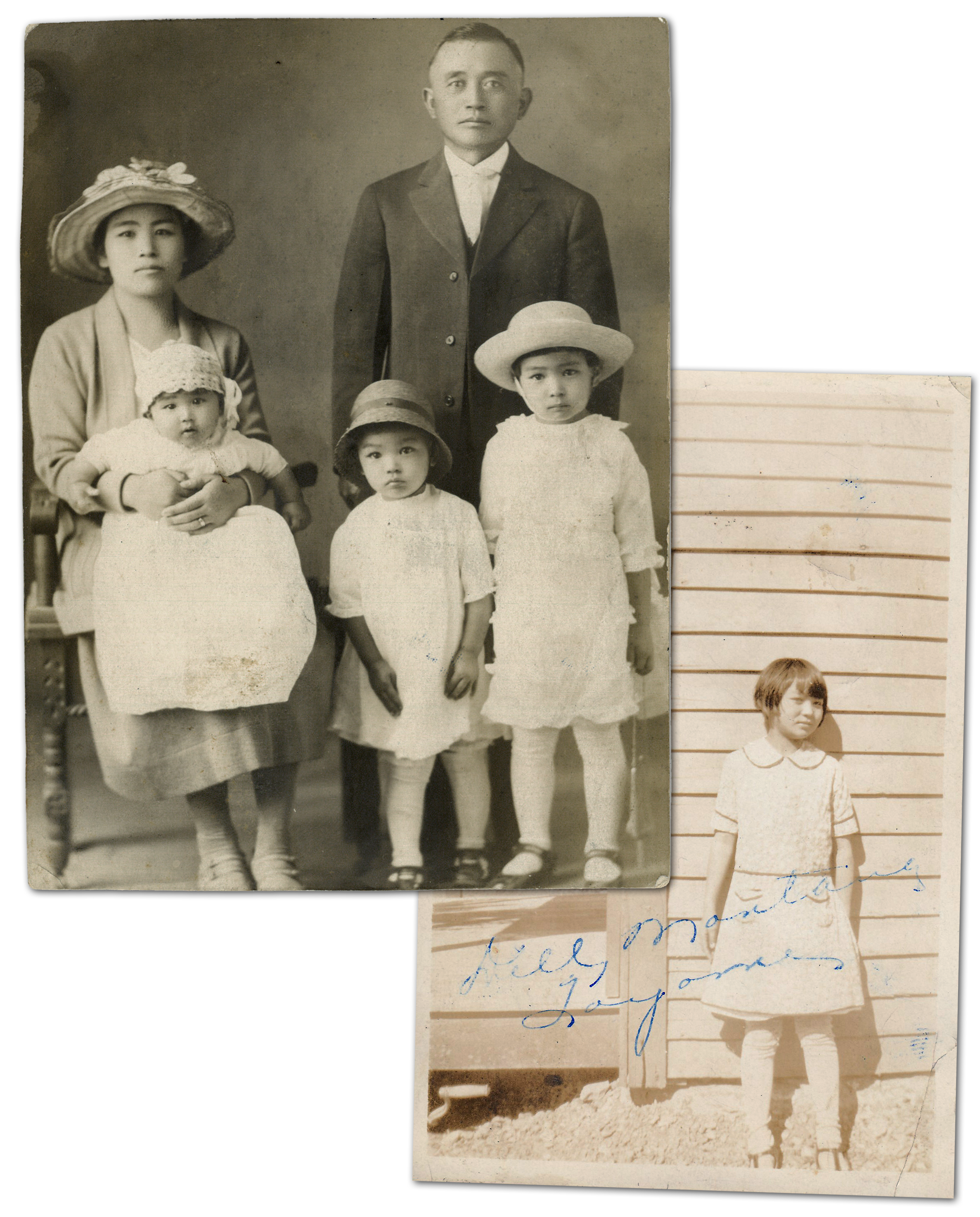
Left: Terry with her family in Montana, right: Terry at home in Dell, Montana.
Terry was raised in a strict bilingual household where the “American way” and education were emphasized.
She disliked having to go to Japanese language school every day after public school. She preferred playing outdoors, enjoying baseball, marbles, ice skating, and sledding.
Terry was doing housework for the university dean when she learned about the bombing of Pearl Harbor on December 7, 1941, by the Japanese.
After this, her world fell apart. Her stepfather lost his job. The family was thrown out of their rented house and they were forced to live in a car. All because of their Japanese ancestry. It was a very difficult time.
Taken in by friends in Idaho, Terry and her family had to work in the potato fields to pay rent.

Terry working in the potato fields in Idaho
Terry's brother, Kiyoshi, volunteered for the 442nd Regimental Combat Team as soon as he graduated from high school. Because the family lived outside of the military exclusion zone, they were not forced into concentration camps like other people of Japanese ancestry.
One day, Terry saw a recruiting flyer for the Women’s Army Corps. She decided to sign up, but was initially denied because of her ethnicity.
You take care of the home front and I’ll do all of the fighting.|Terry’s brother, Kiyoshi, |to her upon his deployment
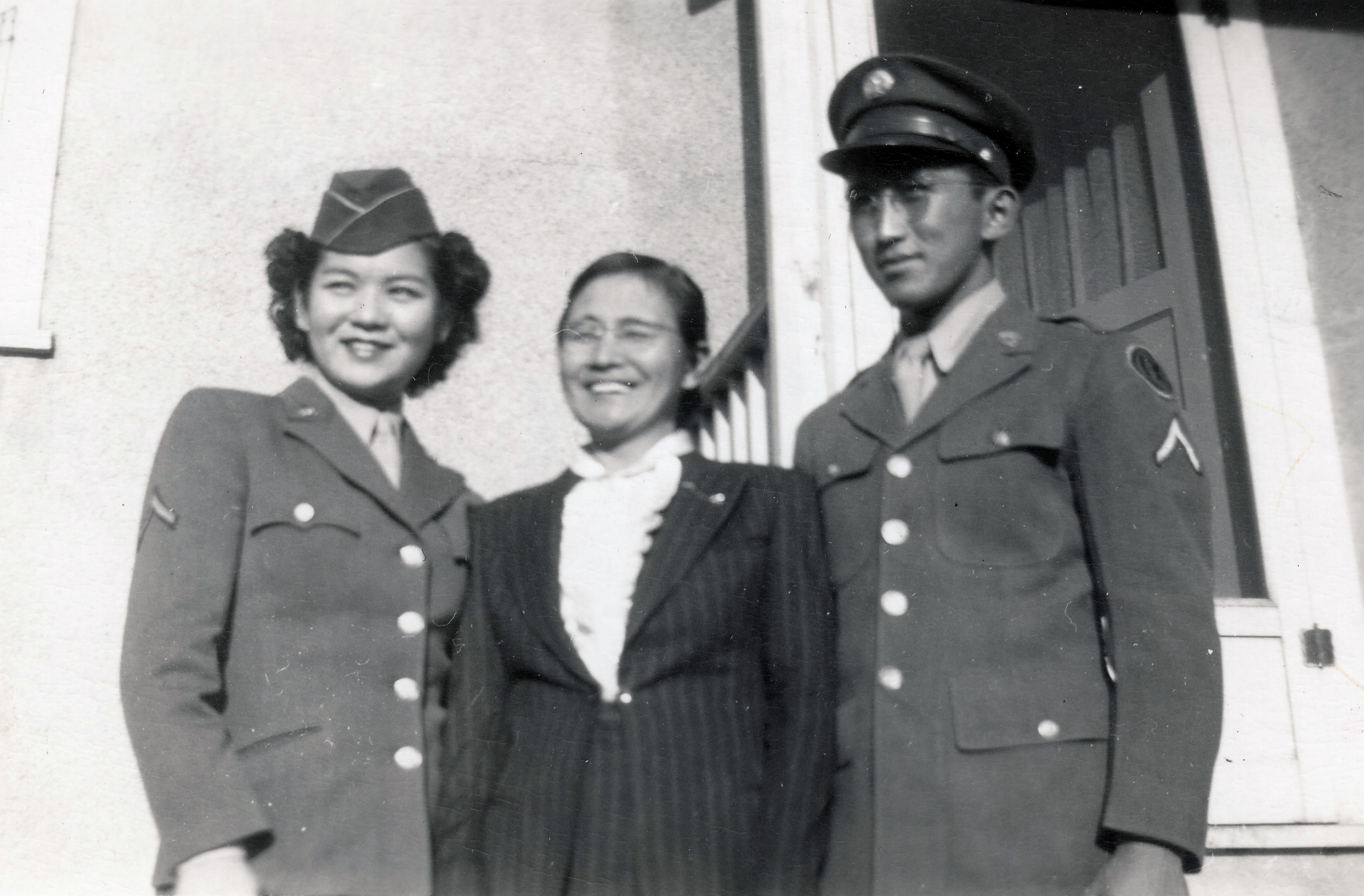
From left: Terry, Yano, and Kiyoshi, who was killed in action in 1945
WAC Enlistment
Terry’s mother, Yano, thought that it was unladylike for her daughter to join the military. Yano eventually changed her mind after hearing from friends.
When the WAC recruitment office opened enlistment to Nisei women, Terry was free to enter.
Her two other brothers also joined the Army Corps of Engineers and Military Intelligence Service. They were a military family.
After basic training in Iowa, Terry was assigned to Fort Benjamin, Indiana, to prepare jeep parts for overseas shipment.
Only about 80 Nisei women were part of the WAC. With so few, the Army decided to integrate them into the mainstream military units, unlike African Americans, Puerto Rican women, and Japanese American men.
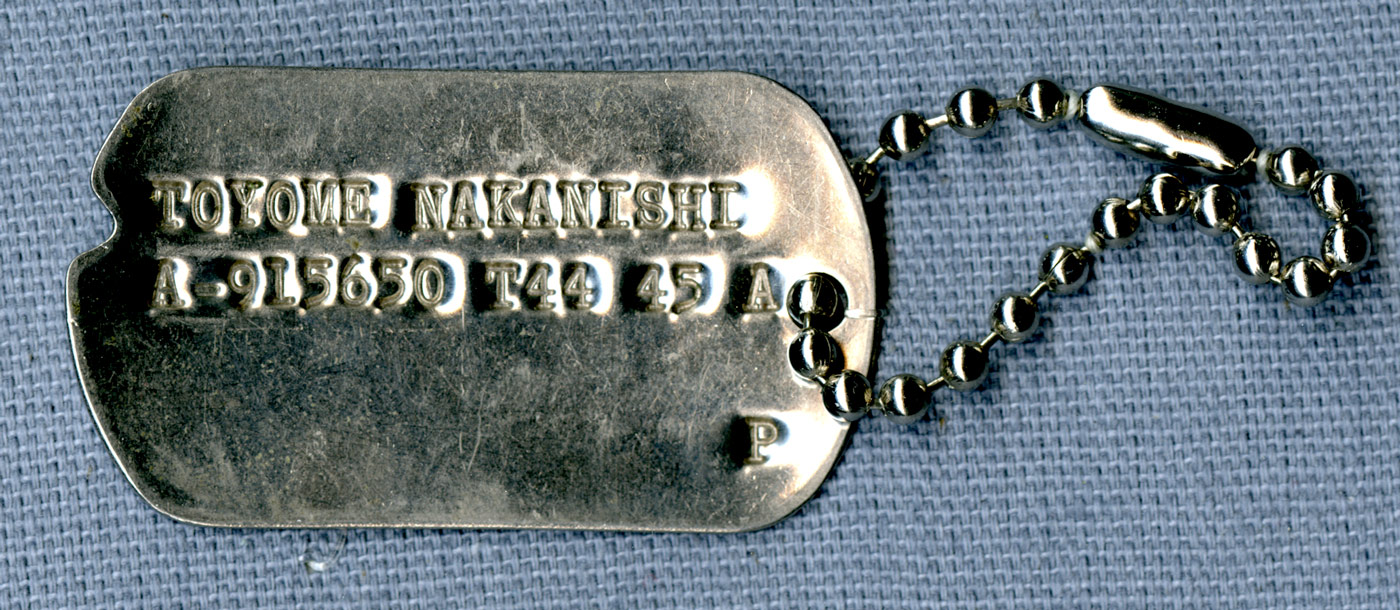
Terry’s dog tag
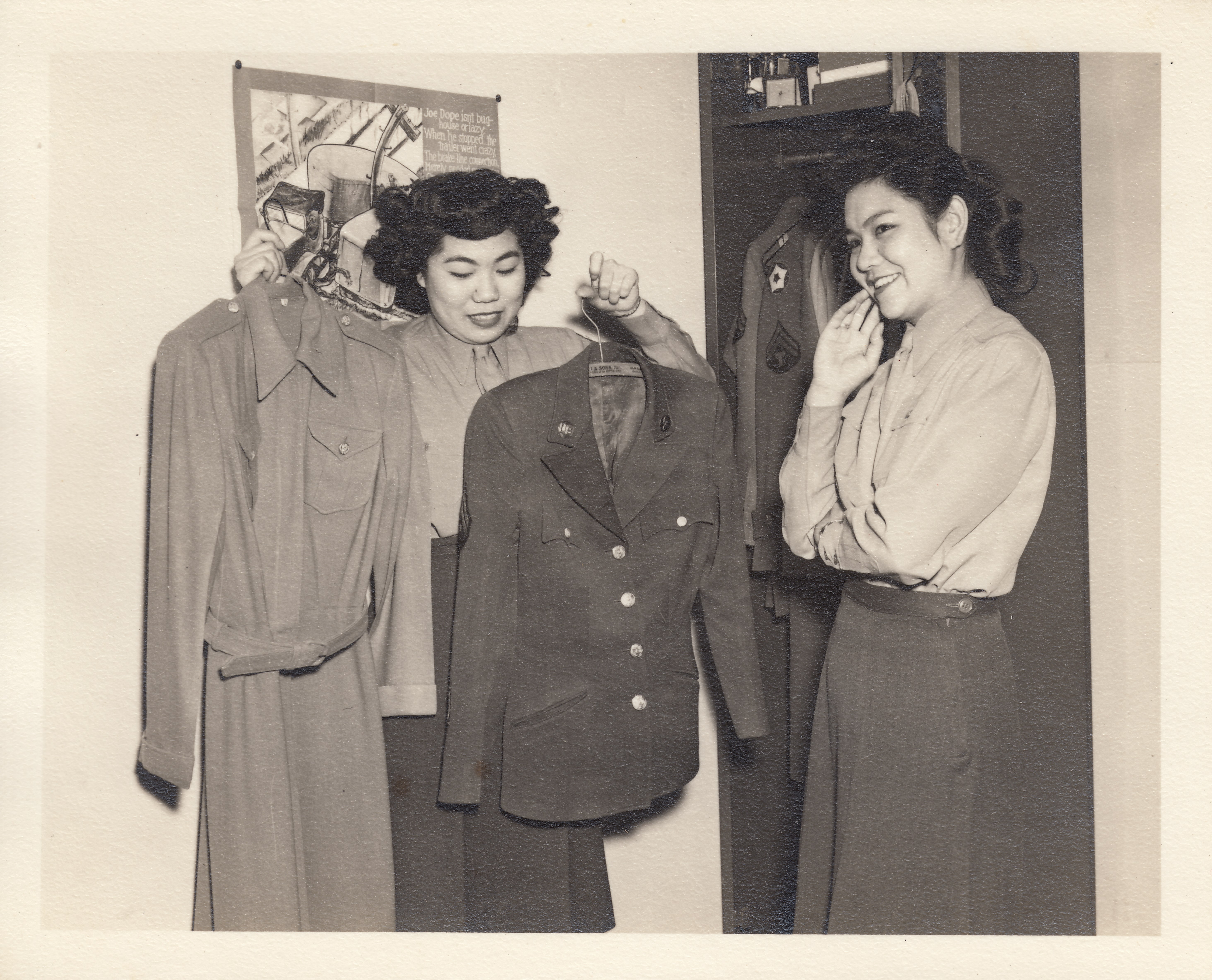
Kay Ogura and Terry look at their new WAC uniforms.
In 1945, Terry was among the first Nisei WACs to be sent to the Military Intelligence Language School in Fort Snelling, Minnesota.
As an early arrival, Terry was assigned to march the Nisei WACs every morning. Many Nisei WAC were five feet or under. Terry recalled that it was difficult to keep them synchronized in line.
Approximately 50 Nisei women served in the language school during World War II.
The Nisei women were trained in speaking and writing military-style Japanese. Because Terry’s linguistic skills were limited compared to her comrades from Hawaii, she was placed in the lowest level class.
Terry wanted to be involved in medical service, but was assigned to the clerical pool because of her superior typing skills.

Newspaper announces Terry's arrival at Fort Snelling Minnesota.
Marriage
Because the Nisei women served at the language school with men, there were many opportunities for dating.
At a dance, Terry met a Honolulu soldier with the US Counter Intelligence Corps, Toshio “Lefty” Nakanishi. Two months later, they were married on January 2, 1945, in Fort Snelling. The married couple were often apart since Toshio was involved in many covert and classified missions.
Occupation of Japan
The newlyweds did not have an opportunity to spend much time together in the US. After the end of the war, Terry was among 13 WACs sent to serve in the Occupation of Japan.
Because General Douglas MacArthur was not supportive of women in the military, the WACs were disbanded in Japan and offered civil service jobs within the US Army instead. The group decided to stay and work in Japan. Terry’s husband also worked in Tokyo.

News clipping announces the Nisei WACs' assignment to Occupied Japan.
Upon Terry’s arrival, post-war Japan was in a shambles and orphans were begging in the streets.
Terry was assigned to G2 Intelligence Headquarters under General MacArthur. She provided administration and limited translation support for trials of war criminals like Imperial Japanese Army General Hideki Tojo. She also was the secretary of Lieutenant Colonel Paul Rusch, who had served at the Military Intelligence Service Language School.
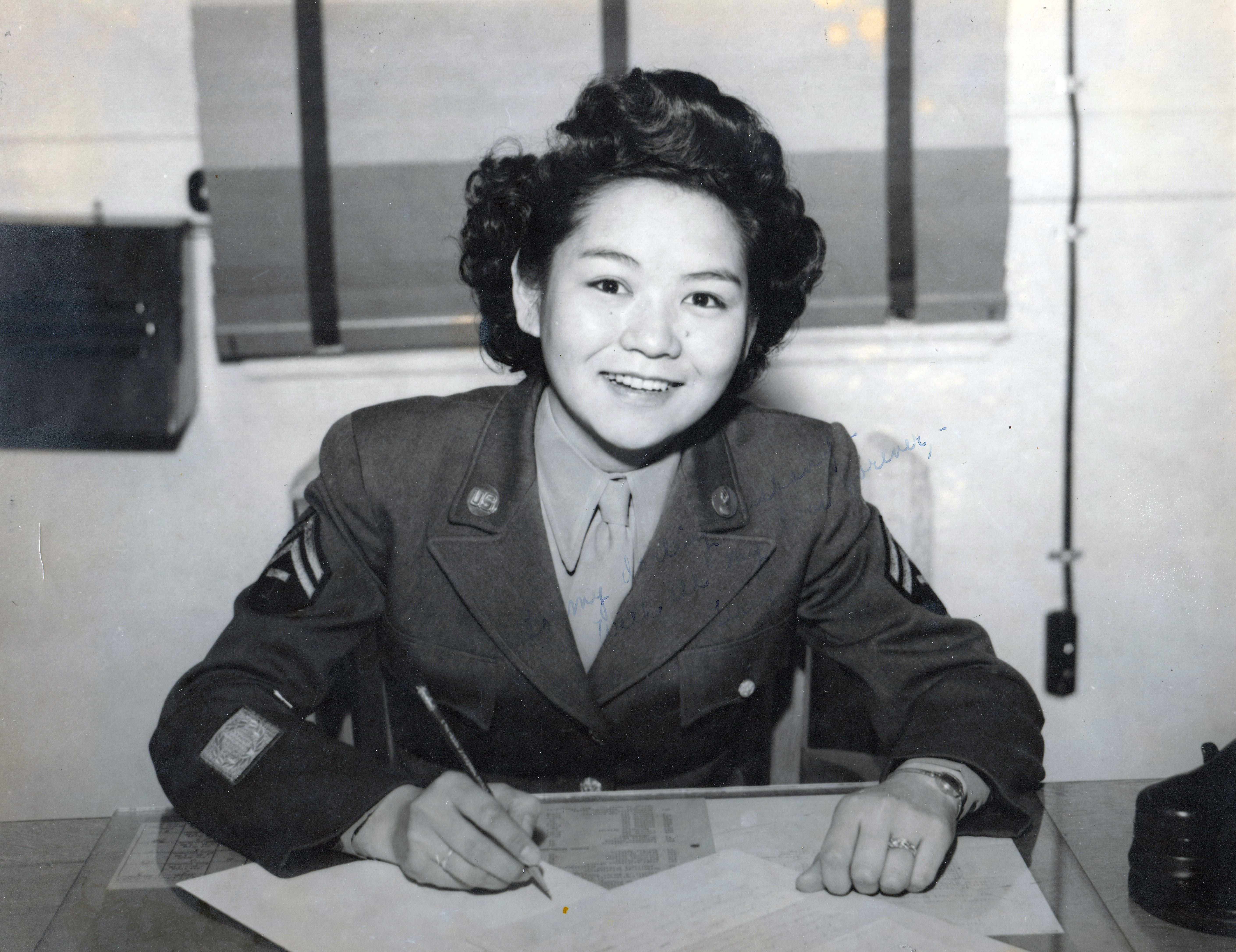
Terry at her desk at G2 Intelligence HQ in Tokyo Japan

Terry volunteered her time at the American Red Cross.
Post-war
The Nakanishis eventually returned to the US. Toshio continued his military career through both the Korea and Vietnam conflicts.
Because Terry was not able to achieve her dream of becoming a nurse, she devoted her time volunteering at the Red Cross and Fort Ord Hospital.
Terry raised two sons. One of them, Calvin, served as a soldier in the Vietnam War.
Throughout her life, Terry has put others before herself. She is a tower of strength because, in life, “you have to be strong.”

The photo of 80 Nisei WACs is cherished by Terry Nakanishi.
Legacy of the Nisei WACs
Terry and her Nisei comrades challenged the World War II stereotypes about Japanese Americans and women. By pursuing a nontraditional path in military service, these WACs proved that Japanese American women could play an important role in protecting their nation’s interests and maintaining peace.
Resources
To learn more about Terry Toyome Nakanishi, visit Resources.
Credits
Photographs and newspaper articles courtesy of Terry Nakanishi and family. The letters and dogtag are a gift from Terry Nakanishi to the National Japanese American Historical Society.
